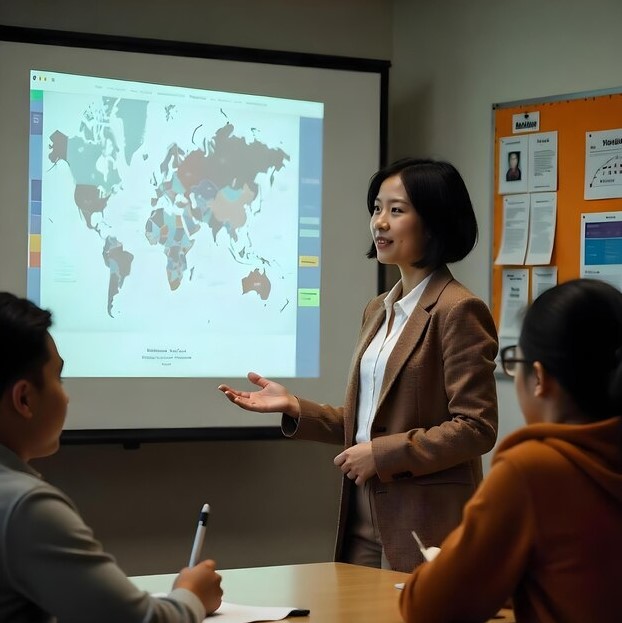The Ultimate Guide to Outsourcing Custom Software Development
— August 5, 2019Software applications are vital in managing core aspects of modern businesses. They reshape business models, optimize processes, and improve how value is delivered to customers. For businesses, custom software—tailored to meet specific operational needs—is no longer optional but essential.
When it comes to creating custom software, businesses face two primary choices: building an in-house team or outsourcing development to a qualified partner. Each option has distinct advantages and challenges, but outsourcing has emerged as the more practical and strategic approach for most organizations. However, outsourcing only succeeds when the right technology partner is selected, and expectations are clearly defined.
This guide outlines the process of outsourcing custom software development, ensuring clarity at every step to help businesses achieve optimal results.
Choosing the Right Technology Partner
Selecting a technology partner is one of the most critical decisions in outsourcing. A reliable partner does more than deliver technical solutions—they understand your business goals and transform your ideas into functional software. However, finding a suitable partner requires diligence and clarity in expectations.
Understanding Your Business Needs
The outsourcing journey begins with clear communication of your business requirements. When you approach a technology partner, they will typically assign a business analyst to understand your vision. This process requires you to provide detailed insights into three main areas:
- Your Idea: Share your concept, whether it’s a vague one-liner, a reference product, or a detailed list of features. Clarity at this stage helps the partner align their approach with your vision.
- Business Challenges: Highlight the specific problems your business faces and explain how the software should address them. This ensures the solution is both practical and impactful.
- Operational Impact: Define how the software is expected to enhance daily operations. This clarity helps the partner tailor the development to create meaningful improvements.
Requirement Elicitation and Roadmap Development
After understanding your needs, the next step involves requirement elicitation. This structured process gathers input from all stakeholders—users, customers, and internal teams—to define the software’s functionality and overall workflow.
The objective here is to design a roadmap that minimizes time-to-market, maximizes return on investment (ROI), and mitigates risks. This stage often includes brainstorming sessions, interviews, and competitive analysis to pinpoint must-have features and refine the software concept.
The output of this process is a comprehensive Requirement Understanding Document (RUD), which outlines the product’s vision, roadmap, and key deliverables. This document serves as the foundation for the development process.
Selecting the Right Technology Stack
Choosing the right technology stack is a pivotal decision that determines the scalability, cost, and long-term viability of the software. Factors such as feature complexity, integration needs, and future growth must guide this choice. A strong technology stack ensures the software can handle evolving demands without compromising performance.
Additional considerations include community support, security standards, fault tolerance, and cross-platform compatibility. A forward-thinking partner will help evaluate these factors and recommend the most suitable tools and frameworks for your project.
Estimating Cost and Timelines
Once the roadmap and technology stack are defined, the focus shifts to estimating development costs and timelines. This phase involves analyzing the scope of work, identifying potential risks, and breaking down the project into manageable milestones.
A qualified outsourcing partner provides detailed cost breakdowns and delivery schedules, enabling you to plan effectively. To further reduce risks, it is advisable to begin with a discovery phase. This phase outlines the entire development scope, user flows, and projected costs while validating the feasibility of the concept.
Development and Deployment
The development phase involves translating the roadmap into reality. Agile methodologies are widely preferred for custom software development due to their adaptability and transparency. This iterative approach allows for continuous feedback and improvements, reducing the risk of major setbacks.
Effective project management tools and communication strategies are critical during this phase. Regular updates, real-time collaboration, and milestone reviews ensure the project stays on track and meets quality expectations.
Once development is complete, the software undergoes rigorous testing before deployment. A successful deployment is just the beginning—ongoing monitoring and feedback collection are essential to refine the product further.
Post-Deployment Maintenance and Analysis
The work doesn’t end after deployment. Software requires consistent evaluation to ensure it meets user needs and performs efficiently. Analytics tools help track user engagement, identify gaps, and guide updates.
Competitive analysis is equally important to stay relevant in a dynamic market. Regular updates, whether through feature enhancements or UI/UX improvements, keep the software competitive and user-friendly.
Planning to Outsource Custom Software Development?
Choosing the right outsourcing partner is the key to successful custom software development. A clear understanding of your business goals, a well-structured roadmap, and a reliable technology partner can help you create software that drives growth and delivers lasting value. Contact us to learn how we can help bring your vision to life.





